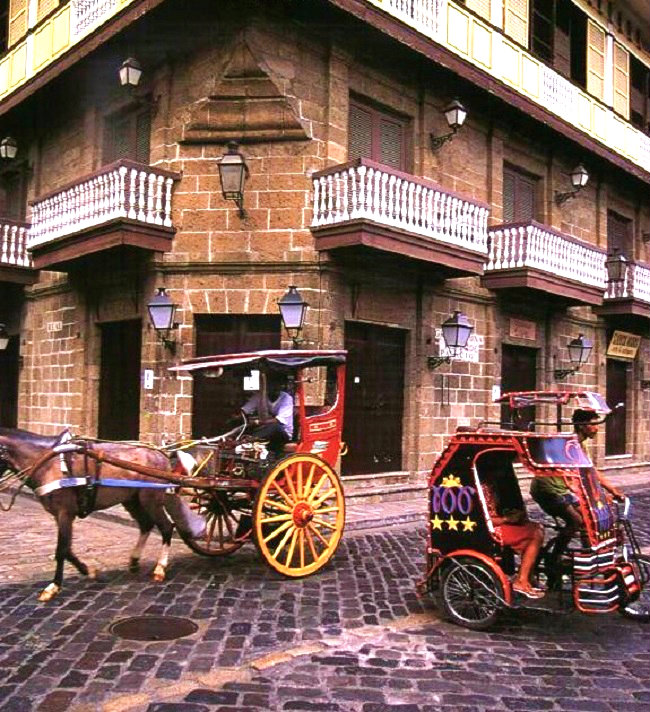Intramuros
Intramuros is the historic centre and oldest district of Manila, the capital city of the Philippines. Also known as the Ciudad Murada (Walled City) because of its most famous feature: a nearly three-mile-long circuit of massive stone walls and fortifications that almost completely surrounds the entire district.
From the city's foundation in 1571 to the end of Spanish rule in 1898, Intramuros was Manila. The Spanish conquistador Miguel López de Legazpi laid the foundations of the new capital on the former site of Maynilad, a palisaded riverside settlement ruled by a native chieftain. To protect the inhabitants from attack, in the late 1500s construction began on a series of stone walls and fortifications that would eventually enclose a pentagonal area approximately 0.67 sq km in size, within which lay a tight grid-like system of streets and a main square surrounded by government structures. The defensive curtain was more or less completed by the 1700s, although improvements and other construction work continued well into the next century.
Within the protective walls rose a city of stone palaces, churches, monasteries, convents, schools, and fine courtyard houses. In the centuries that followed, Manila (meaning Intramuros) served as the capital of the Spanish East Indies - the centre of commerce, education, government, and religion in Spain's most distant imperial possession.
Except for a brief period under British rule (1762-1764), Intramuros remained a Spanish city until 1898, when the U.S. took control of the Philippines at the end of the Spanish-American War.
In 1945, during the fierce Battle of Manila between American, Filipino and Japanese forces, Intramuros was almost completely destroyed. Instead of rebuilding on the same site, many of the religious orders and educational institutions that once resided in the walled district packed up and moved elsewhere. Although steps were taken to protect the city's historic character, vague laws and poor enforcement led to many unsightly modern buildings being built upon the ruins of the old. In 1979, the Intramuros Administration was established and stronger measures introduced in order to preserve what was left.
Many of the city's ancient gates and most of the walls have since been restored. On the other hand, there has been almost no progress in the reconstruction of key landmarks (such as major churches and old government buildings), due in part to a serious lack of funds and the existence of new structures.



































